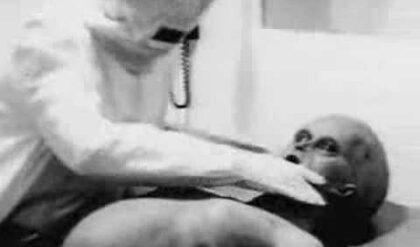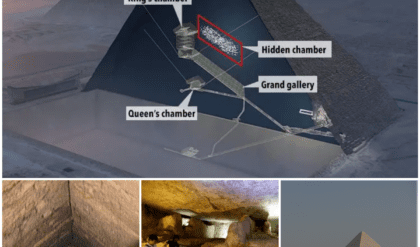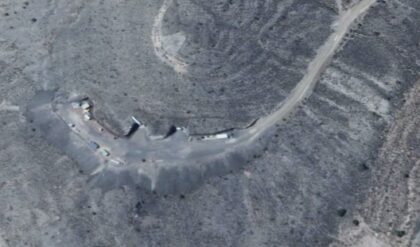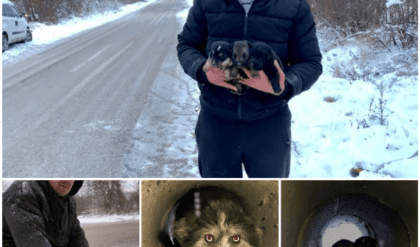
Both exploited and cherished, the mummies of Guanajuato are at the center of a debate over displaying human remains.
Guanajuato, Mexico, has been on the UNESCO World Heritage list since 1988, thanks to its colonial Spanish architecture, silver-mining history, and sites related to the Mexican Revolution. Its baroque churches, narrow cobblestone streets, and candy-colored houses are postcard-pretty, but the biggest tourist attraction in the central Mexican city is darker and more gruesome than all that: an underground museum of one hundred mummies

A mummified baby boy at the Museo de las Momias in Guanajuato, Mexico, is dressed as a saint, a common practice for infant burials in Central and South America. The body is among one hundred naturally preserved 19th- and 20th-century mummies displayed in the popular museum.
The slack-jawed men, leathery-skinned infants, and other corpses have been luring curious travelers for more than a century. Visitors first paid a few pesos to view the mummies in an underground crypt. Since 1969, they’ve been displayed under spooky spotlights at the Museo de las Momias.
 Many of the bodies at Guanajuato’s Museo de las Momias are displayed standing up, which some scholars believe interferes with their preservation.P
Many of the bodies at Guanajuato’s Museo de las Momias are displayed standing up, which some scholars believe interferes with their preservation.P
These naturally preserved corpses (no bandages or embalming here) from the 19th and 20th centuries are a revenue generator and a source of local pride for this city about an hour’s drive west of San Miguel de Allende. “The mummies of Guanajuato bring the biggest economic income to the municipality after property tax,” says Mexican anthropologist Juan Manuel Argüelles San Millán. “Their importance is hard to overstate.”
The mummies are also controversial. Travelers from other cultures have a hard time grasping why one of Mexico’s most beautiful cities displays macabre human remains. Some scholars think the bodies are badly stored and mislabeled. Earlier this year, plans for a glitzy new momias museum were scrapped after scholars and UNESCO reps balked at its location atop a proposed downtown shopping mall.
It’s all brought renewed attention to these fragile remains. The National Insтιтute of Anthropology and History (INAH) just launched a study, headed by San Millán, to determine the idenтιтies of the mostly anonymous bodies. An exhibition of sensitively crafted pH๏τographs of the mummies by local artist Michael James Wright will headline at Guanajuato’s esteemed annual Festival Internacional Cervantino October 13 through 30 and then go on tour in Mexico and abroad. “These projects can dignify the ᴅᴇᴀᴅ and turn them into something educational instead of a sideshow,” says Wright.
Here, we unwrap how the mummies and their museum came to be and why it all continues to draw crowds to Guanajuato.
How mummies—and myths—were born
Despite Guanajuato’s spectacular historic city center, the mummies museum at the edge of town is often the first place tourists visit. “I’m going to see the aunts,” joke Mexicans heading to Guanajuato. People stand in line for hours to enter the museum, elbow to elbow with street vendors hawking charamusca, a local cinnamon sugar candy shaped like, what else, mummies.
 A 1911 pH๏τo shows the mummies of Guanajuato in their original display space, a crypt underneath the city cemetery. The naturally preserved bodies were disinterred when their families didn’t pay grave taxes.
A 1911 pH๏τo shows the mummies of Guanajuato in their original display space, a crypt underneath the city cemetery. The naturally preserved bodies were disinterred when their families didn’t pay grave taxes.
Mexican tourists tend to accept corpses on display with a mix of interest and respect, but not revulsion—this is the birthplace of Días de los Muertos, after all. “But for travelers from other parts of the world, I really have to put the museum in context,” says Dante Rodriguez Zavala, a Guanajuato native and guide with Mexico Street Food Tours. “For Mexicans, this isn’t bizarre or weird. We have a comfort level with death—we take food to our ᴅᴇᴀᴅ loved ones on Day of the ᴅᴇᴀᴅ and invite mariachis into the cemetery.”
Around Guanajuato, you’ll hear ghostly whispers about the origin of the momias: some were buried alive, others died in a cholera outbreak, all were preserved due to mineral-rich soil. “Plus, to make people interested in seeing the mummies, cemetery workers started telling stories about hangings, desperados, and witches,” says Gerald Conlogue, a diagnostic imaging professor emeritus with Quinnipac University who has extensively studied the mummies.
The truth is simpler and indicative of Mexico’s matter-of-fact atтιтudes toward death. Like many public cemeteries, the circa-1861 Pantéon Santa Paula had a policy where families paid a yearly burial tax to keep loved ones’ remains interred in its aboveground tombs or niches, which resemble stone bookcase cubbies. In 1865, graveyard workers began removing the bodies of people whose relatives couldn’t afford to pay the fees or who had no living family.
Opening the tombs, workers expected dusty bones. Instead, they found many bodies still remarkably intact with skin, hair, even tongues. The warm, dry environment turned out to be ideal for preserving human remains. “If the sun hits the niches all day, as is the case in the Santa Paula, it causes the bodies to quickly dehydrate,” says Maria del Carmen Lerma Gómez, a forensic anthropologist working on the INAH study.
A creepy tourist attraction emerges Word got out about these miraculous mummies, which gravediggers propped along the walls in an underground ossuary. Some still wore their burial clothes, high-ʙuттon shoes, or tags indicating their names and death dates. They quickly became a curiosity and a moneymaker for cemetery workers.
 A naturally preserved corpse at Guanajuato’s mummy museum appears to be screaming, the result of its jaw muscles releasing after death.
A naturally preserved corpse at Guanajuato’s mummy museum appears to be screaming, the result of its jaw muscles releasing after death.
“For a small fee the attendant will admit the visitor to the ‘chamber of horrors,’” opined a National Geographic magazine travel article in July 1916. “A winding stair leads to the crypt, where ghastly mummified remains are placed in a ghostly row, grinning resentment at the curious.”
Over the years, tourists swiped the mummies’ name tags as souvenirs, robbing most bodies of their idenтιтies. Museum guides and locals filled in the gap with new monikers and magical narratives—a female body deformed by severe scoliosis called La Bruja (The Witch), another corpse known as El Ahogado (The Drowned Man).
 A new study of Guanajuato’s mummies aims to identify the 19th- and 20th-century remains and to determine how to better conserve them.
A new study of Guanajuato’s mummies aims to identify the 19th- and 20th-century remains and to determine how to better conserve them.
They became cultural ambᴀssadors for the city, both real-life attractions and fictional muses. The momias battled masked, caped luchadores (Mexican wrestlers) in a pair of 1970s horror movies and haunted a troubled married American couple in Ray Bradbury’s 1955 short story The Next in Line. A new streaming series, Pinches Momias (Damn Mummies), debuts in Mexico next year.
What to do with the mummies
The INAH study launched in February, spurred by complaints about the proposed new museum and alleged mistreatment of the mummies. Critics took issue with the city government ferrying the fragile bodies to out-of-town conventions and—scandalously—displaying them in one of Guanajuato’s underground tunnels during a car rally.The INAH project has San Millán’s team digging through 19th- and 20th-century death certificates, church documents, and newspapers to identify the mummies. Forensic methods (X-rays, DNA analyses of hair, teeth, or skin) could even link the remains to present-day Guanajuatons.
“They should be treated like human bodies,” says San Millán. This means, he says, that if a previously unknown mummy turns out to be someone’s great-great grandfather and the descendants disapprove of it being on display, it’ll be reinterred “immediately and without any problem.”
INAH scholars and other experts hope the new study improves how the mummies are showcased and gives them new recognition as cultural artifacts. Updating the museum’s climate control and storing the bodies horizontally instead of vertically could also help with preservation.
“These are just regular people who are repositories of information about the period they lived in,” says Conlogue. “They walked these streets, they went to the old market. They shouldn’t be a freak show.”





